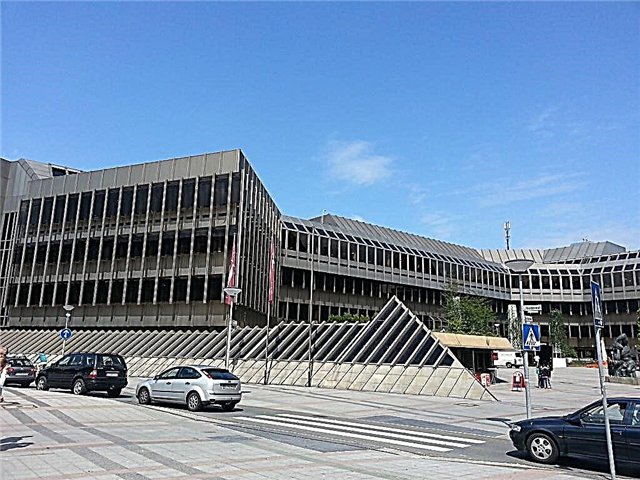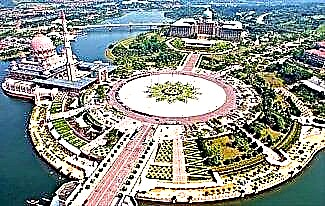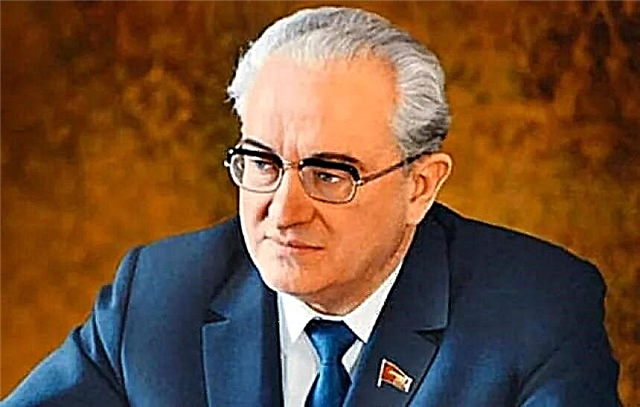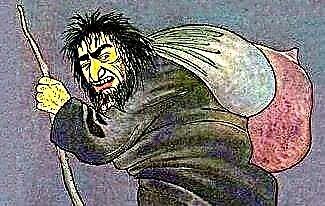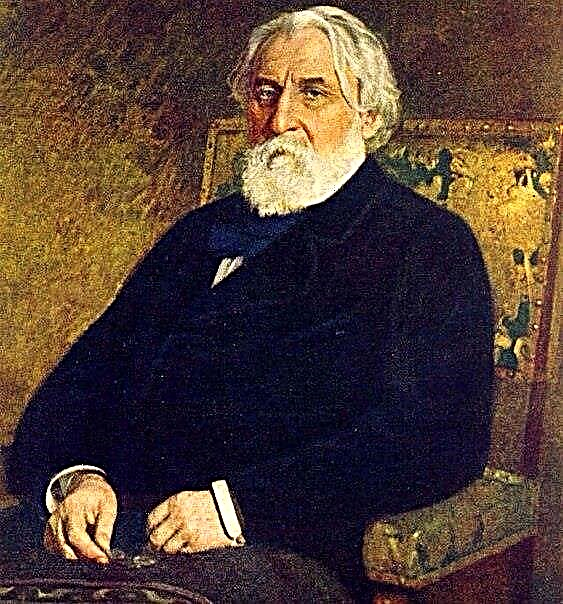In disputes about what it was like in Russia at the beginning of the twentieth century, many copies were broken. Stories about the notorious crunch of a French roll are replaced by information about total poverty and illiteracy, collections of penny food prices are parried by tables with meager salaries.
But if you abandon the polemic and get acquainted with what Moscow and its inhabitants lived in those years, you might be surprised: apart from technology, there are not so many changes. People worked and had fun in the same way, got into the police and went to summer cottages, complained about problems with housing and greeted the holidays with enthusiasm. “Nothing is new under the moon, / what is, what was, will be forever,” wrote Karamzin 200 years ago, as if knowing everything in advance.
A conversation about everyday life is never complete without a conversation about money. At the beginning of the twentieth century, the average salary of the lower classes was about 24 rubles a month. The peasants for the most part earned less, if at all went to zero. Therefore, there was no end to those wishing to work at construction sites, plants and factories.
The salary of an officer and a medium-sized employee ranged from 70 rubles a month. The employees were assigned various kinds of payments: apartment, feed, candle, etc. From the memoirs it follows that if the head of the family earned 150-200 rubles a month, then this money was barely enough to lead a lifestyle corresponding to his circle.
1. Despite the pace of progress, eight-story skyscrapers began to appear in the city - life in Moscow at the beginning of the twentieth century flowed, obeying the established order for centuries. Following the celebration of Christmas, Christmastide followed with their unrestrained merriment and amusements. Then the fast began. Restaurants were closing. Russian actors went on vacation, and theaters were flooded with foreign guest performers - the post did not apply to them. By the end of the post, sales were timed, they were called "cheap". Then they celebrated Easter and slowly began to leave for their dachas, out of town. Moscow was empty until the end of summer. Closer to autumn, the work of institutions, various societies and circles was resumed, exhibitions and performances began, classes in educational institutions were resumed. The busy life continued until Christmas. Also, there were up to 30 holidays a year, even diluting the fast. Holidays were divided into church and royal, which would now be called state - birthdays and namesakes of crowned persons.
2. One of the famous feuilletonists wrote that the spring dacha madness is inevitable as love. In the then Moscow, the dacha was not a symbol of prosperity - everyone tried to get rid of the dust and stench of their hometown. Summer Moscow scents combined the smells of garbage cans, poorly developed sewers and horse-drawn transport. They fled from the city. Some of them are in comfortable estates with artesian wells, milking herds, vegetable gardens and an English park, who, according to the recollections of one Muscovite, are in a poorly landscaped cramped house with four rooms downstairs and three upstairs, not counting the servants' rooms, a kitchen, closets and storerooms. Many were content with a five-wall apartment in an ordinary village near Moscow. The dacha question spoiled Muscovites no worse than the housing problem. Dachas were then located in Kuzminki, Odintsovo, Sokolniki, Osinovka, including the so-called. Losinoostrovsky village (there was a kind of homeowners association, which set up a gymnasium, fire department, shops, pharmacies, etc.), and other areas that have long become part of Moscow. Prices until 1910 ranged from 30 to 300 rubles. per month, i.e. were comparable to apartments. Then their sharp growth began, and even the price of 300 rubles a month did not guarantee comfort.
3. Point development is not at all an invention of the late XX - early XXI centuries, and certainly not a malicious invention of Yu. M. Luzhkov. Moscow was demolished, rebuilt and built up throughout its history with the almost complete connivance of the city authorities. The tradition of protecting cultural monuments did not exist yet. Of course, “the society violently protested against the demolition of historic buildings. The then Arkhnadzor was called the Archaeological Society. His influence was negligible. The Society's most important initiative was to photograph old buildings before demolition at the expense of the developer. However, the developers did not even think to fulfill even this trifle.
4. Many would like to hear in the words of Bulgakov's Woland that the housing issue has spoiled Muscovites, an accusation against the revolution and Soviet power. Alas, the housing problem began to spoil the residents of Moscow much earlier. The specificity of the city was that many townspeople rented housing. Nobody rented out an apartment for a long time - what if the price would rise. Therefore, the end of summer for the heads of families has always been marked by the search for new housing. The last decline in apartment rental prices was recorded in 1900. Since then, the cost of housing has only increased, and its quality, as you might guess, has decreased. For 10 years, apartments, as they would say now, of the “middle price segment” have doubled in price in Moscow.
5. Muscovites loved to celebrate, and they celebrated richly and for a long time. Moreover, the ideological and political dogmas of that time practically did not divide classes. At the beginning of the twentieth century, they decided to arrange a New Year's celebration for the public more poorer in the Manezh. Wealthy townspeople pre-booked seats and tables in restaurants, and for a long time they talked about their spree in the Yar, Metropol, Slavyanskiy Bazaar or Hermitage in the press and in the kitchens. Working people more and more went to visit each other, saturating with alcohol to the best of their ability, the body and the wallet. And then it turned out that “insufficient classes” (as they wrote without any offense in the newspapers) can also walk in halls brightly lit with electricity, with waiters, tablecloths, performances by artists and other attributes of a luxurious life. A striking detail: the surviving reports from journalists show who was already widening the gap between the classes. Sketches of the pen sharks assigned to “Yar” are literally salivating, as their authors describe the menu in such detail. Losers, who got to the Manezh, talk not about food, but about drunken cattle, who do not appreciate the "master's" treatment.

6. The role of night clubs in Moscow in the early twentieth century was played by balls. These assemblies were pretty much democratized. No, for the aristocrats, everything remained the same - mothers brought out their daughters, and the circle of invitees remained rather narrow. But practically everyone could get into the so-called "public" (arranged by various societies) balls. At such balls, judging by the descriptions of newspapers and reviews of elderly memoirists, there was a complete decline in morals: the music was too fast and too loud, the ladies' outfits breathed with debauchery, the dance moves made the audience regret the bygone days of Domostroi, kokoshniks and embroidered sundresses.
7. Muscovites had problems with water for the time being. The city grew faster than the water supply system developed. Neither the requirement to install expensive water meters nor the harsh punishment of water carriers helped. These enterprising citizens blocked access to free fountains with water, and after collecting free water, they sold it on the streets at prices four times higher than tap water. In addition, the close-knit artels of water carriers did not even let those who wanted to take one bucket of water to the fountains. Nikolai Zimin, an engineer of the Moscow City Council who was in charge of water supply issues, was subjected to the most severe criticism. The engineer responded to the criticism with action. Already in 1904, the first stage of the Moskvoretsky water supply system built under him started working, and the city forgot about problems with water.
8. The Moscow police at the beginning of the twentieth century did not at all consist of obese, mustachioed, half-drunk uncles, ready to profit from the common man with any trifle. The police recruited, first of all, people who were literate (then it was a serious criterion) and quick-witted. In order to know the exam, candidates for the police had to pass an exam of 80 questions of varying degrees of trickyness. In addition, examiners could ask a question, the answer to which required not only knowledge of the instructions, but also some mental alertness. Actually, the duties of the policeman were described in 96 paragraphs. The policemen took the jiu-jitsu wrestling exam. Judging by the fact that in 1911 the Japanese police delegation did not win a single victory in sparring, the Russian police were taught well. The policemen received little - salaries were calculated from 150 rubles a year, plus either an "apartment" in the barracks, or apartment money, which was enough for a corner on the outskirts. Able policemen, having studied in special courses, were appointed as police officers. Here, salaries began from 600 rubles, and decent rent was paid, and, most importantly, a person had already fallen into the cage of the bureaucracy. Having risen one more step, the policeman became a bailiff - 1400 salary, 700 rubles. dining rooms and a paid apartment of at least 6 rooms. But even that kind of money barely provided a tolerable existence at the level of its circle.
9. Corruption in the Moscow police was the talk of the town. Inappropriate spending of budgetary funds, bribes, protection, connivance with criminal acts up to direct complicity were so closely intertwined that the inspectors had only to shrug their shoulders. The merchants testified that on Easter and Christmas they collected hundreds of rubles for police officers, but not as a bribe, but because “fathers and grandfathers are so established, and he is a good man”. The brothel keepers transferred 10,000 rubles to the account of the police charitable fund and continued their activities. The owners of the gambling houses felt that they could afford such a sum and made a charitable contribution as well. It got to the point that the police covered large-scale theft of goods on the railway with breaking of seals, arson, murder and other attributes of the Wild West. It was worth millions - only one of the companies that insured goods suffered losses of two million rubles. The case for the police ended only with layoffs. The head of the Moscow police, Anatoly Reinbot, immediately after his dismissal, took up railway concessions that required millions of capitals. Of course, before that, Rainbot lived exclusively on an officer's salary, and just before entering the railway business, he successfully married.
10. To witnesses of the avalanche-like development of information technologies, the pace of development of the Moscow telephone network at the beginning of the 20th century will seem a mockery. But for the then level of technology development, an increase in the number of subscribers by an order of magnitude in 10 years was a breakthrough. At the beginning of the 20th century, telephones in Moscow were used by almost 20,000 private subscribers, more than 21,000 enterprises and institutions, both private and public, and 2,500 public catering establishments. Another 5500 subscribers used parallel telephones.

11. The shame of Moscow was the bed-room apartments. Such housing was very accurately described by I. Ilf and E. Petrov in the story “12 chairs” under the guise of a former student hostel. Any living space was partitioned off with curtains or board walls so as to get the maximum possible number of beds. There were more than 15,000 such bed-and-box apartments in Moscow. Instead of two people, 7-8 people settled in the rooms. No discount was made for either gender or marital status. Enterprising owners even rented out “shelves” - one bed for two tenants who slept in turns. The story can sometimes be very ironic special - after a century, the "shelves" will turn into a "half-luggage compartment".
12. The main entertainment of Muscovites during the season (from August to April) was theaters. Muscovites did not feel much reverence for actors or singers. Theatrical reviews or announcements were mostly ironic. However, theaters, in the absence of other types of cultural leisure, were filled regularly. This was the case even if in all theaters (except for the Imperial Bolshoi and Maly, in Moscow at least 5-6 more theaters, owned either by private individuals or by associations of actors, worked on a professional basis) were openly failed performances. Therefore, we tried to get tickets in advance. Muscovites had to queue at the box office even after dark, and use various connections in order to get a ticket or a counter-ticket. Of course, there was a network of illegal trade. It was opened in 1910. It turned out that for a certain Moriarty of the local spill, who bore the modest nickname King, about 50 traders worked. They bought tickets at the box office and sold them at least twice the face value through second hand (the one who offered the tickets did not have them with him, and in case of arrest he got off with a fine). The King's income was estimated at 10-15,000 rubles. in year. After the arrest and conviction of the King, the holy place did not remain empty. Already in 1914, the police reported on the presence of a new structure that controlled the sale of tickets to the Bolshoi Theater.
13. An indispensable part of the sports life of Moscow were wrestling competitions, which were held in a specially built theater building in the Zoological Garden. These were shows, real competitions took place in the circus. And in the Zoological Garden, fighters played the roles of representatives of various nationalities or religions. The obligatory participants in the program were a Jewish wrestler and a Russian hero. “Representatives” of other nations were introduced to the show based on the international situation. In 1910, the first women's wrestling tournament was held with a prize fund of 500 rubles. The audience, not spoiled by the opportunity to admire women's bodies, poured girls in tight tights into the fights. Competitions for skiers, cyclists and football matches were held. Muscovite Nikolai Strunnikov was the European world champion in speed skating, but he could not defend his title in 1912 - there was no money for the trip. In 1914, the first boxing fights were held at the Sports Palace on Zemlyanoy Val. In total, there were 86 sports societies in Moscow. It is interesting that the problem of professionals and amateurs existed even then, but the watershed ran somewhat differently - not only people living on income from sports were considered professionals, but also representatives of all professions based on physical labor. At first, the Moscow ski champion Pavel Bychkov was refused the title and the award - he worked as a janitor, that is, he was a professional.
14. Cinematography took root in Moscow rather hard. The business was new, and at first the owners of the cinemas set awkward prices. Tickets to the "Electric Theater" on Red Square cost 55 kopecks and 1 rub. 10 kopecks This scared away viewers, and the first cinemas quickly went bankrupt. For some time the films were shown in variety theaters as part of the program. And when the Anglo-Boer War began, it turned out that newsreels were very popular among Muscovites. Gradually, the owners of cinemas began to approach the business with greater responsibility - professional musicians were hired as tappers, capital buildings were built to show films, rather than "shed-like" buildings. Yes, and the cinema developed by leaps and bounds. The apotheosis was the opening of the A. Khanzhonkov cinema. After an unremarkable solemn part, the audience was shown a video shot before the start of the celebration at the front of the cinema. Khanzhonkov and his specialists managed to carry out the necessary procedures in the shortest possible time and prepare them for the show. The prim public instantly turned into a company of self-recognized children, pointing their fingers at the screen. Prices gradually settled at the level of 15 kopecks. for a "standing place", 30-40 kopecks.for a seat in the middle of a cinema and 1 rub. in posh cinemas like Khudozhestvenny. Strawberry lovers - then they were French ribbons - paid up to 5 rubles. for a night session. Tickets were admission tickets, that is, they could be spent in the cinema at least the whole day.
15. Muscovites saw their first airplane flights in the fall of 1909, but the Frenchman Gaillau did not make much of an impression. But in May 1910, Sergei Utochkin made Muscovites sick with the sky. His flights attracted thousands of spectators. The slightest details about the upcoming flights, the condition of the pilots and machines were published in the press. Newspapers also reported on foreign aviation news. All the boys, of course, dreamed of becoming pilots. As soon as an aviation school opened on Khodynskoye field, all the youth of Moscow came running to enroll in it. However, the aviation boom faded away rather quickly. Aviation turned out to be an expensive and dangerous business, and looked more like a curiosity with no practical sense. Therefore, already in 1914, Igor Sikorsky could not raise money to organize the flight of the already built aircraft "Russian Knight".

